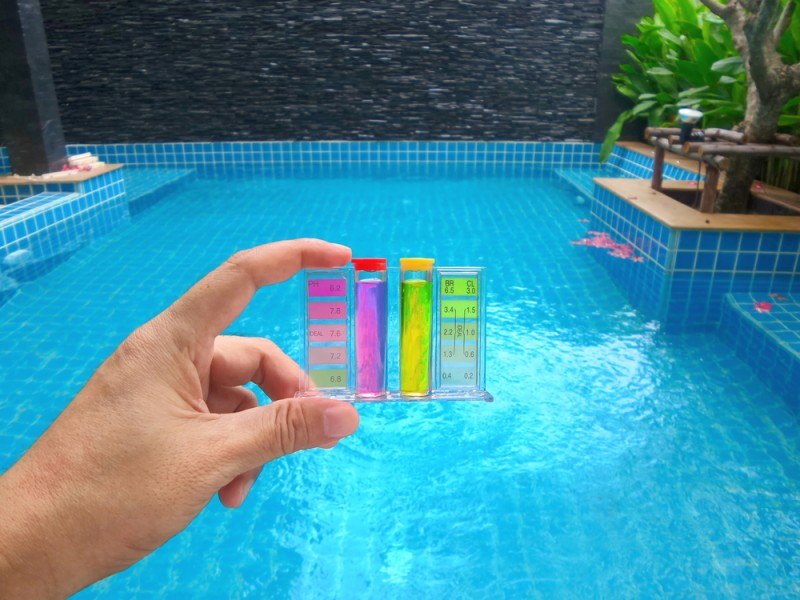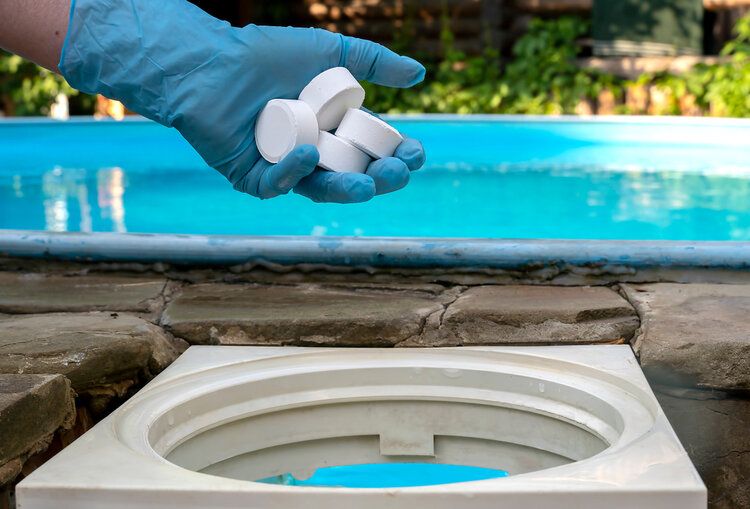How To Quickly Get Rid of Water Bugs In Your Pool
-
Pete Ortiz
- Last updated:

Regardless of why they are there and the potential benefits they could offer, pool owners do not like bugs in the pool. We all know how difficult it is to get perfect blue and clear water; the last thing anybody needs is bugs all over the top.
Sometimes when it’s just a few bugs in your pool, you may get away with a quick skim, but other times you won’t be so lucky. Two main types of water bugs will invade your pool. We are here to let you know how to quickly get rid of them and get back to enjoying that pool.
The Two Types of Water Bugs?
1. Water Boatman
The first type of water bug is called a Corixid or a Water Boatman. This bug will paddle around in your pool water, but they are also capable of flying. Water boatmen have large eyes and usually grow to about a ½-inch long. These bugs are not the most beautiful things you have ever seen, but luckily, they do not bite. In fact, water boatmen are not bad bugs at all.
2. Backswimmer
The second type of water bug is the Backswimmer, which is much more of a problem than a Water Boatman. The main reason behind this is that Backswimmers will bite. Their bite feels a bit like a bee sting, so you will want to avoid these pesky creatures at all costs. A Backswimmer and a Water Boatmen look very similar. It can be challenging to distinguish which one has invaded your pool. The main difference is that the Backswimmer will be swimming on it’s back. Take a quick look at the bug, and if you notice this, you are dealing with the more annoying of the two water bugs.
Why Do I Have Water Bugs?
Now for a basic science lesson. Bugs are just trying to survive. When they establish themselves as regulars in your pool, it is because you have something to offer them. Water Boatman eat algae to survive. If you have Water Boatman in your pool, you most likely have an algae problem that is about to begin (if it hasn’t already). In addition to eating the algae, Water Boatman like to lay their eggs in algae. If the algae is left untreated, these bugs will continue to multiply along with the algae.
So that explains Water Boatmen, but what about those biting Backswimmers. Backswimmers are predators in the bug world; they are looking for other bugs, very likely Water Boatman. If you have an issue with Water Boatmen in the pool, it will very likely expand to a problem with Backswimmers if left untreated. Although Backswimmers will not eat algae, they do like to lay their eggs in algae.

Steps for Removal
Now that we know why the water bugs have come for a visit let’s work on getting them out of the pool. One of the main questions pool owners ask when it comes to water bugs is if it is dangerous to swim when they are in the water. If you have some volunteers that don’t mind swimming with bugs, it won’t be hazardous for them. You will want to avoid the backswimmers, so you don’t have to deal with a sting. The best thing to do is just get the bugs out.
1. Skim

The first thing you need to do is remove as many of the bugs as you can with the skimmer. Many people will tell you to kill the bugs that you remove, but that is entirely a personal decision. The Water Boatmen are pretty good at flying, so the chances are that they will fly away soon after removal. If you think that killing these bugs will keep them from coming back, you are wrong, there are more, and they will find your pool water quickly. Maybe just let the bugs get on their way while you focus on the pool water.
2. Clean

The next thing you will want to do is clean your pool. The pool will need to be vacuumed and brushed. For this vacuum, try to use a traditional pool vacuum and not an automatic cleaner. You will want to make sure that you hit all sides of the pool and get any dirt that has settled on the bottom. After the vacuum, make sure to brush all the sides and the bottom of the pool. Remember that an algae outbreak is on its way, if it hasn’t already started. Brushing the sides of the pool and disturbing the algae is a critical step in this process.
3. Chemical Check

Now that all of your cleaning and skimming is done, it’s time to check the chemical levels in the water. You will want your pH to be between 7.4 and 7.6, the chlorine between 1.0-3.0 parts per million (ppm), and the alkalinity between 80-140 ppm. This is something that you should be doing a few times per week to make sure that your pool remains algae free. Adjust your chemical levels accordingly and then move to the next step.
4. Shock

The last step in the water bug removal process is to shock the pool. Follow the recommendations for your particular pool size and make sure you use enough shock. Remember always to shock your pool at night so that the chemical is not quickly burned off by the sun. After shocking your pool, keep your pool filter running for at least twenty-four hours. Letting the pool filter run will make sure the shock is evenly distributed and that all areas of the pool end up algae free.
At this point, your pool should be looking quite a bit better, and the water bugs will have likely found a better hang out spot with lots more algae to feast on. The natural habitat for these bugs is lakes and ponds where there is plenty of food for them to stay alive. If you don’t want to be known to the local bug community as a pond, lake, or even swamp owner, let’s talk about things you can do to keep these water bugs away from now on.
- Chemical Checks: Your pool water needs to be checked often. Wouldn’t it have been nice to have caught this problem before the bugs! If you notice issues in pH or chlorine, fix them as soon as you can. This is good advice not just for keeping bugs away but for a whole host of other potential pool problems as well.
- Daily Skimming: Some times of the year, there won’t be a single bug in your pool; other times, it will be covered. Depending on where you live, pests can be a seasonal thing. Although skimming daily may not permanently remove bugs, it will help when it comes to them laying eggs. If you can get them out of the pool before they multiply, you are on your way to a cleaner pool.
- Treat the Area Around the Pool: If you take a mixture of dish soap and water and spray it on either type of water bug, it will kill it. We don’t recommend this as a way to deal with the issue, but it can be used as a preventative measure. If you take that spray and use it around the perimeter of the pool, it can help to keep the bugs away. If they land in it, they may die, but they will also be bothered by the presence of the soap/water concoction and choose another area to hang out. Some pool owners wonder about having their yard treated by a pest control company although this might be effective in dealing with a host of creatures, when it comes to water bugs you must treat the source of food before you can get rid of the problem.
- Algaecide: Algaecide can be an effective way to keep algae out of your pool. If you continually struggle with algae outbreaks, algaecide will help you keep the pool clear. There are a few downsides to algae, one of them being that it can mess with the water clarity. If you continually monitor your pool chemical levels, that should be enough to keep algae away.
- Pool Cover & Lights: Pool lights will attract bugs. They enjoy the lights, and it helps them find the food they are looking for. If you turn your pool light off at night, you may find that you have fewer pool bugs when you wake up in the morning. The same goes for a pool cover. If the water is covered, the bugs will likely not even bother. The problem with pool covers is that they can sometimes be cumbersome and annoying to put on every night. If you don’t see yourself using the pool cover, don’t invest in one.
It should not be hard to keep water bugs away from a properly maintained and balanced pool. It doesn’t take too long as a pool owner to realize the importance of daily, weekly, and monthly pool maintenance.
Conclusion
If you have water bugs in your pool, you do not need to panic. The water bugs are there to get food. As soon as you eliminate their food source, they won’t want to be in your pool. The removal process for water bugs is very straightforward and mainly consists of getting that algae out of your pool. Keep in mind that there are ways to prevent this outbreak from happening again, but the best possible thing you can do is keep your pool chemical levels in check.
Featured Image Credit: sirirak kaewgorn, Shutterstock
Contents



